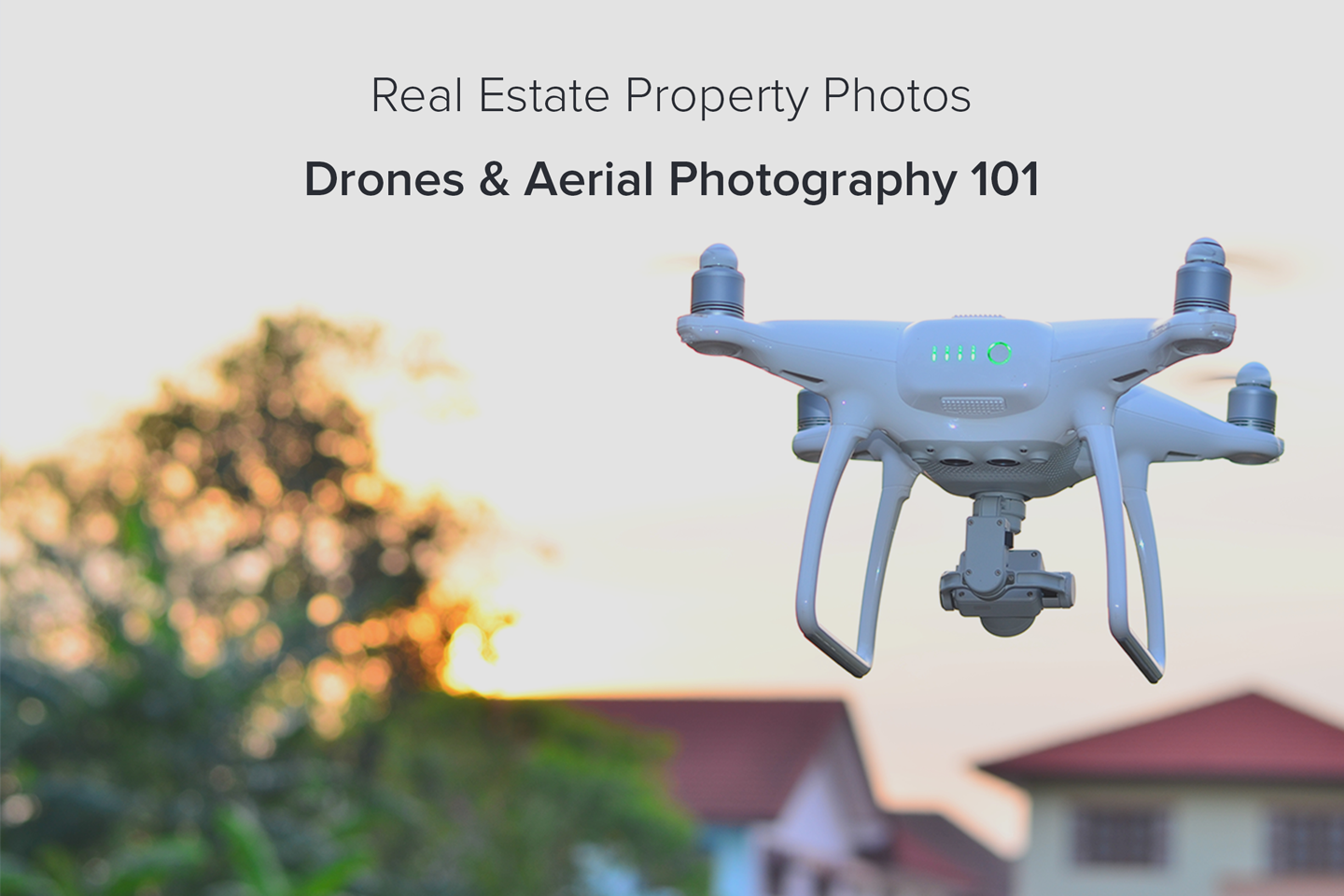You are viewing our site as an Agent, Switch Your View:
Agent | Broker Reset Filters to Default Back to ListReal Estate Property Photos: Drones and Aerial Photography 101
October 30 2017

Are you ready to present a bird's eye view of your next listing? Or do you want to show an out-of-town buyer the lay of the land around a prospective purchase? Either way, drones are the latest real estate tool that will let you take your photography to a new level and help you stand out from your competition.
What Is a Drone?
A drone is a device that flies while you direct it via a remote control box that often functions like a game controller. Some manufacturers use a Wi-Fi hotspot that connects to your phone and you control the drone with a downloaded app.
Drones are typically made from light composite materials to control weight and improve maneuverability. There are four propellers on most drones, one at each outside corner of the device. Operating time is typically in the 20-30 minute range. The control range varies widely from 800 to 7,000 meters.
There are acronyms you need to be familiar with: UAV (Unmanned Aerial Vehicle) and UAS (Unmanned Aircraft System). In common usage, you'll see those terms used to refer to drones.
Drone Overview
Drones come in many varieties. At the low-end of the market, they can cost under $100, while drones with more features can cost several thousand dollars. There is a learning curve and you'll need to practice, but most people find drones fairly easy to use after they've gotten somewhat proficient.
- Beginner Drones: These drones cost approximately $50-$200. These models are more difficult to control outdoors, especially if there's any wind. Models with cameras will take lower-quality photos and videos that may not be suitable for your real estate business. Considering their costs, beginner drones are excellent learning platforms.
- Intermediate Drones: Drones in this category typically range from approximately $300-$1,000. They are more stable when flying outdoors and can usually take higher resolution video (at least SD or standard high-definition) and photos. As costs plummet, more and more intermediate drones are hitting the market with greater features, including automatic home and more powerful cameras.
- Advanced Drones: If you want the top of the line, you'll need to spend $1,000 or more. Advanced drones offer features beginner and intermediate drones lack, including wind stability, GPS navigation, autonomous following and orbiting, high-speed maneuverability, and automatic terrain adjustment. Popular drones at this price range include DJI's Phantom 4 and their sleeker Mavic Pro.
Features to Consider
Some features are almost requirements for real estate. Here are a few to consider:
- FPV: This is a term you'll see quite a bit. It stands for First Person View. It refers to a drone controller that has a screen so that you can see what you're capturing on video or in a photo. Some manufacturers make controllers that connect to your phone or tablet for the FPV function.
- Gimbals: A gimbal attaches to the drone's camera and helps to stabilize and keep the camera still even if the drone is tilting in the wind. Some gimbals will tilt up and down, others can be adjusted up, down and side to side. It can be easier to get the shot you want if you can move the camera as opposed to repositioning the drone itself.
- Return to Home: This is a very handy feature because once you've finished your photography, the drone will return to your location upon command. This is especially handy if you loose line-of-sight of your drone and want it to return to you automatically!
Read DronesGlobe's article reviewing 13 drones they recommend for real estate!
Do I Need a License to Fly? Regulations for Drone Users/Pilots
In August, 2016, the FAA published new rules for drone pilots. Based on the rules, flying a drone for real estate purposes is considered to be in the "Flying for Work or Business" category. The requirement for a pilot's license has been removed, but a number of rules remain. The list below is a partial list of requirements.
The pilot must:
- Be at least 16 years of age
- Pass an aeronautical knowledge test
- Be vetted by TSA
The drone must be registered and weigh less than 55 lbs. It must be flown during the day, and at or below 400 feet and within sight of the pilot.
Becoming a Pilot
The FAA also has a page on becoming a pilot that has more information. In summary, you need to obtain a Remote Pilot Certificate, which costs approximately $150. In order to obtain the certificate, you need to pass the Aeronautical Knowledge Test.
This test must be taken at an approved facility. You can find the facility closest to you by reviewing this PDF file. There are study materials available, including the Airman Certification Standards (ACS) for Unmanned Aircraft Systems, the Remote Pilot Study Guide and the online sample questions.
If you have questions, contact the FAA's UAS Integration Office via [email protected] or by calling 844-FLY-MY-UA.
Online Communities and Resources
You'll find a great deal of general information as well as product information at PhantomPilots.com, a forum sponsored by the manufacturer DJI. It's also a place where you can ask questions and learn piloting tips and tricks.
The National Association of REALTORS® has a Drone FAQs page for your information, and a Field Guide to Drones and Real Estate.
From all indications, drones are making a difference in marketing homes, and that influence will undoubtedly increase over time. If you don't want to pilot a drone yourself, consider hiring an experienced real estate drone pilot and try it out.
For more on real estate photography, read Real Estate Property Photos: Property Photography 101!
To view the original article, visit the Chime Technologies blog.









